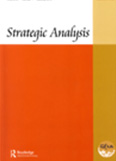Sri Lanka’s Human Rights Imbroglio
The visit of Louise Arbour, the United Nations High Commissioner for Human Rights, and the subsequent resignation of four prominent civil right activists including Human Rights Watch award winner Sunila Abeysekera from an advisory committee of the Ministry of Human Rights, have highlighted the alarming state of human rights in Sri Lanka.
- Published: November 06, 2007









